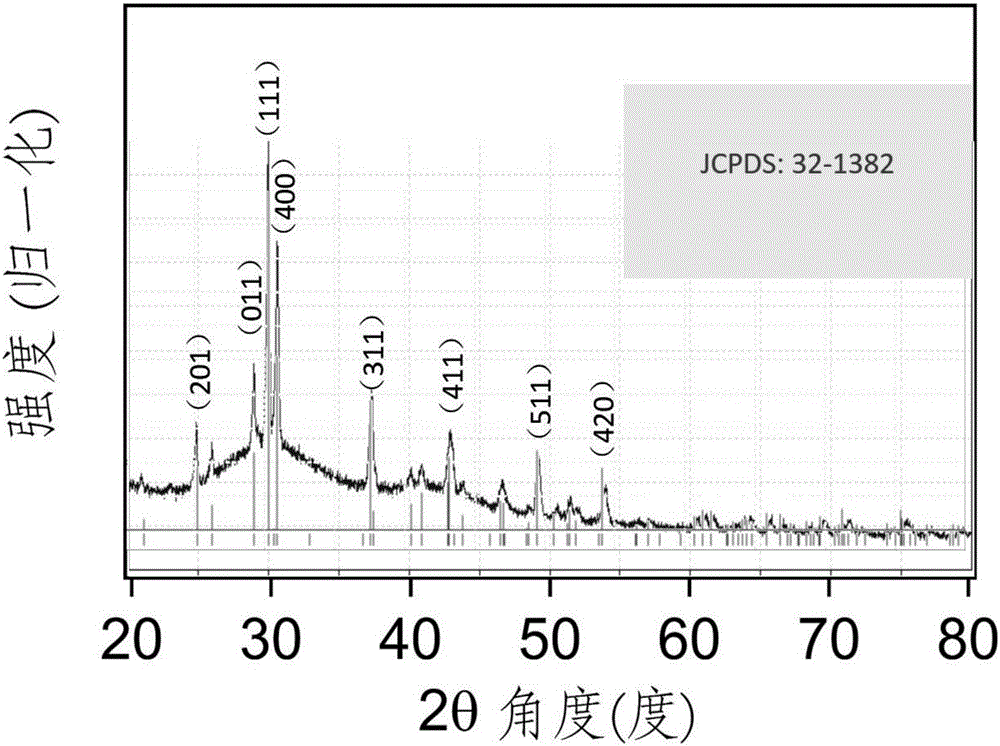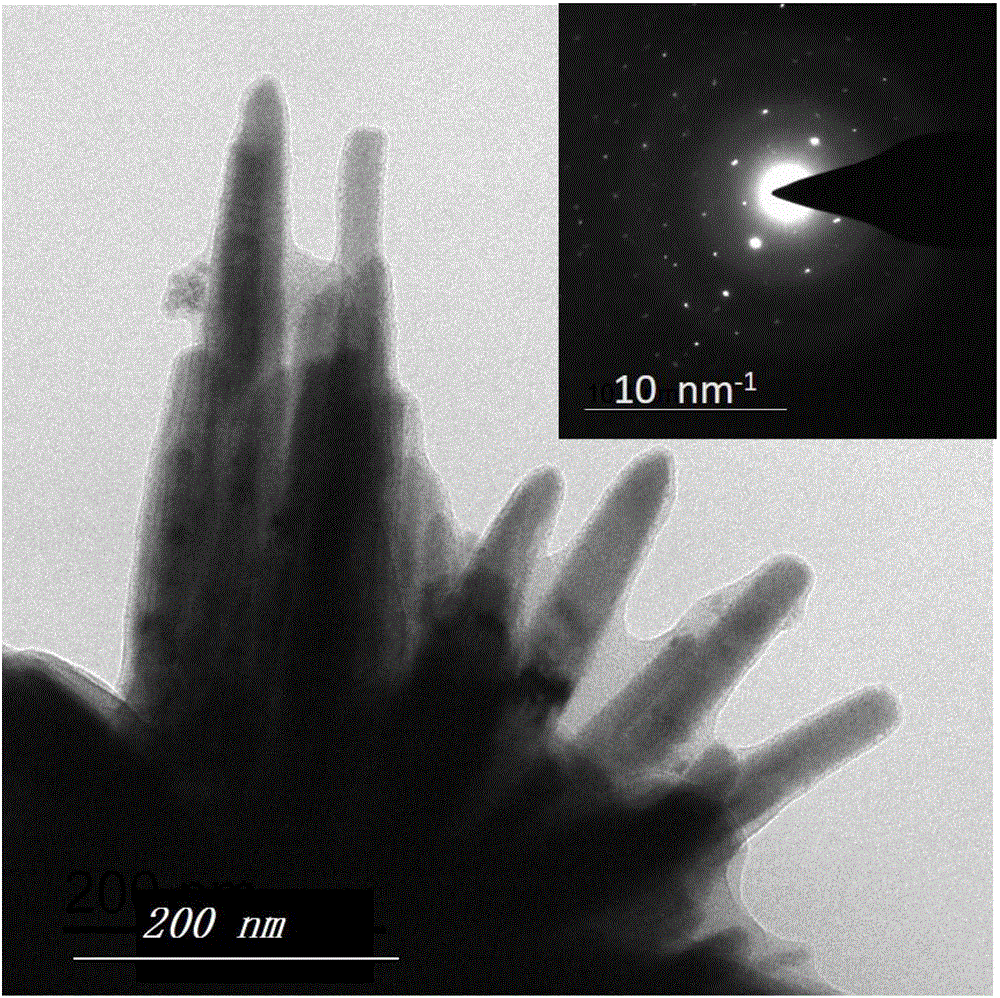Room temperature water solution growth type stannous selenium nanorod cone monocrystal and method thereof
A technology of stannous selenide and aqueous solution method, which is applied in the direction of chemical instruments and methods, solution from liquid solvent at room temperature, single crystal growth, etc., can solve the problems of long reaction time and poor crystallinity of nanosheets, and reach the goal of reaction time Short, improved photocatalytic efficiency, simple and fast process
- Summary
- Abstract
- Description
- Claims
- Application Information
AI Technical Summary
Problems solved by technology
Method used
Image
Examples
Embodiment 1
[0035] Measure 10 milliliters of water into a 50 milliliter bottle, add 1 mmol of tin dichloride and 5 mmol of L-tartaric acid in turn, and stir magnetically to form a transparent solution. In addition, dissolve selenium powder in potassium hydroxide aqueous solution, the molar ratio of selenium powder and potassium hydroxide is 1:250, forming a dark red solution. At 22°C, quickly pour the transparent solution of tin dichloride and L-tartaric acid into the dark red solution of selenium, and react for 2 minutes to obtain a black solution. Centrifuge the black solution in a centrifuge at 10,000 rpm for 3 minutes, pour off the aqueous solution, and obtain a black stannous selenide powder.
[0036] Such as figure 1As shown, the obtained product has very sharp X-ray diffraction peaks, indicating better crystallinity. By comparing with JSPDS:32-1382 in the phase database, the obtained product is completely consistent with JSPDS:32-1382. In addition, no impurity peaks are detected,...
Embodiment 2
[0040] Measure 10 milliliters of water into a 50 milliliter bottle, add 1 mmol of tin dichloride and 20 mmol of L-tartaric acid in turn, and stir magnetically to form a transparent solution. In addition, dissolve selenium powder in potassium hydroxide aqueous solution, the molar ratio of selenium powder and potassium hydroxide is 1:300, forming a dark red solution. At 28°C, quickly pour the transparent solution of tin dichloride and L-tartaric acid into the dark red solution of selenium, and react for 5 minutes to obtain a black solution. Put the black solution in a centrifuge and centrifuge at 9000 rpm for 3 minutes, pour off the aqueous solution to obtain a black stannous selenide powder.
[0041] The stannous selenide nanorod cone obtained in the present embodiment is about 500-600 nanometers in length, such as Figure 4 shown.
Embodiment 3
[0043] Measure 10 milliliters of water into a 50 milliliter bottle, add 1 mmol of tin dichloride and 100 mmol of L-tartaric acid in turn, and stir magnetically to form a transparent solution. In addition, dissolve selenium powder in potassium hydroxide aqueous solution, the molar ratio of selenium powder and potassium hydroxide is 1:200, forming a dark red solution. At 20°C, quickly pour the transparent solution of tin dichloride and L-tartaric acid into the dark red solution of selenium, and react for 10 minutes to obtain a black solution. Put the black solution in a centrifuge and centrifuge at 8500 rpm for 3 minutes, pour off the aqueous solution to obtain a black stannous selenide powder. The stannous selenide nanorod cone obtained in this embodiment has a length of about 500 nanometers.
PUM
| Property | Measurement | Unit |
|---|---|---|
| Diameter | aaaaa | aaaaa |
Abstract
Description
Claims
Application Information
 Login to View More
Login to View More - Generate Ideas
- Intellectual Property
- Life Sciences
- Materials
- Tech Scout
- Unparalleled Data Quality
- Higher Quality Content
- 60% Fewer Hallucinations
Browse by: Latest US Patents, China's latest patents, Technical Efficacy Thesaurus, Application Domain, Technology Topic, Popular Technical Reports.
© 2025 PatSnap. All rights reserved.Legal|Privacy policy|Modern Slavery Act Transparency Statement|Sitemap|About US| Contact US: help@patsnap.com



